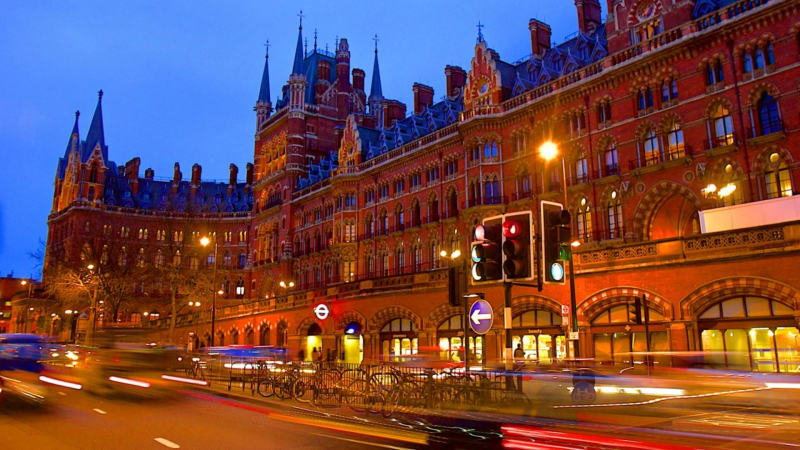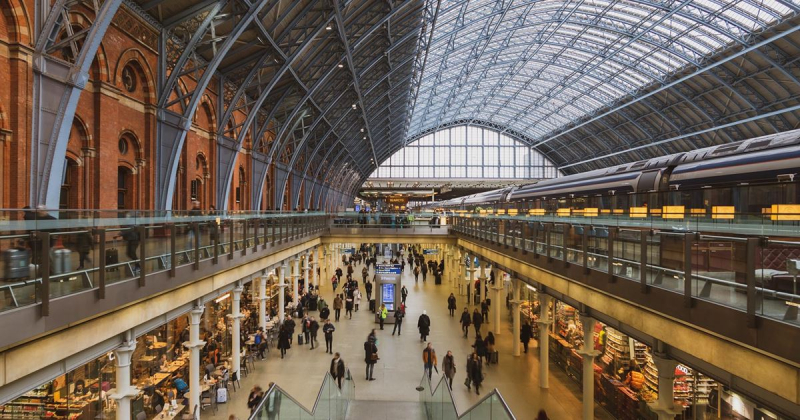St. Pancras International, United Kingdom

The St. Pancras International, also known as the "cathedral of the railways," first opened its doors in 1868. Since then, it has undergone numerous renovations, but it has kept its original charm. It is adorned with numerous works of art and is known for its Victorian architecture. The arched train shed at the station was the biggest single-span building at the time. The Renaissance Hotel has taken up residence on its facade. There are many stores and restaurants located inside the station.
The building was saved from demolition by a raucous public campaign, and its fortunes were revived by the opening of the Channel Tunnel. After an £800 million facelift, it became the London Eurostar terminal, which Queen Elizabeth II opened in 2007. Its revitalization has resulted in the gentrification of the surrounding area. It was once a desolate wasteland of industrial lockups and abandoned warehouses, but it is now a thriving neighborhood of cafes, restaurants, and creative start-ups.
There are many train stations in London, but St. Pancras International stands out as being particularly lovely. Most people agree that the station is among the most opulent ones in the entire world. St. Pancras International served as the main route into London from neighboring cities. It was designed by William Henry Barlow and constructed by the Midland Railway Company, who infused the station with Gothic moments throughout.













